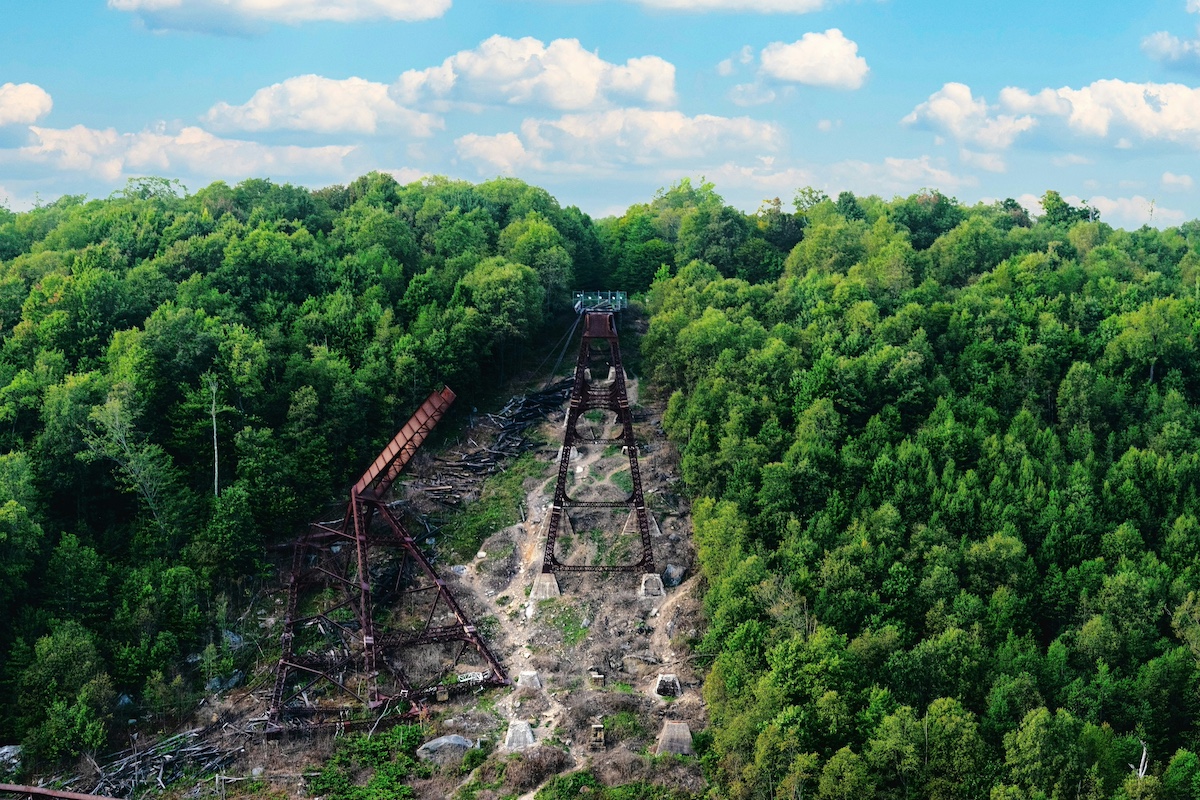Photo: A train traveling through a lush green forest by Ally Griffin (Unsplash License).
By Alice Stevens & Anoukh de Soysa
Reviewed by Rukshana Nanayakkara, Global Policy and Advocacy Expert at the International Land Coalition
In Cambodia, a recent Human Rights Watch report documents how Indigenous Chong people have faced eviction and criminal charges following the establishment of a carbon offsetting project on their lands. In Kenya, “the world’s largest soil carbon removal project”, whose credits have been used to offset the emissions of global corporations including Meta and Netflix, has been accused of dispossessing Indigenous Peoples of economically and culturally significant land, and reducing the climate resilience of thousands of people.
These are some of the casualties of global carbon offsetting programmes that, due to inadequate regulation, oversight, and transparency, among other reasons, fail to take community needs and rights into account. In theory, carbon markets offer a mechanism to compensate for emissions in one part of the globe by channelling funds (through buying carbon offsets) to projects capturing carbon in another part of the globe. However, in practice, carbon markets present a range of governance challenges and corruption risks that require due diligence and oversight to prevent abuse and adverse impacts on Indigenous Peoples, pastoralists, and other local communities.
Voluntary carbon markets, often referred to as the “wild west” because of their largely unregulated nature, are composed of different stakeholders including programs that certify carbon projects, validation and verification bodies like Gold Standard and Verra, intermediaries and buyers. There are no common regulatory standards and there is no overarching governance body responsible for the regulation of carbon markets. Critics of voluntary markets suggest that without such standards and regulation, the market faces threats to both its financial and environmental integrity. Recent scandals have exposed the weaknesses of the system – from allegations by the Guardian that most of Verra’s certified credits are “worthless” to opaque land negotiations acquiring huge tracts of territory across Africa for carbon projects.
Land as a key commodity
Carbon projects that rely on forests and soil make up most of the credits on the voluntary market and require huge amounts of land. This puts enormous pressure on a scarce resource in a sector where tenure insecurity and weak land governance are contributing to corrupt practices and behaviours including policy capture, bribery, collusion, and land grabbing. Land-based carbon projects are also vulnerable to such corrupt practices due to the following characteristics:
-
Lack of regulatory frameworks – Without standards and rules to govern the voluntary markets, they are vulnerable to manipulation, fraud, overestimation of impact, and bribery of officials for approvals and to further private interests. At a national level, markets are often not supported by a policy infrastructure, making it difficult to ascertain carbon rights and allowing corrupt actors to capture the process. This can result in projects that ignore community land rights and/or that fail to achieve their intended environmental impact. A set of standards or guiding principles, agreed by affected communities and other stakeholders, and regulated transparently and independently, is vital to preventing many of these corruption risks.
-
Conflict of interest and undue influence – Corrupt actors can influence policies that will set the rules for land-based carbon projects and obtain undue advantages. This can lead to bribery or collusion to influence decision-making around land use, tenure rights or the regulation of carbon rights. The implementation of carbon projects is also vulnerable to both public and private sector corrupt practices including bribery, manipulation, and fraud to advance private interests. Anti-corruption safeguards, including whistle-blowing channels, the regulation of conflicts of interest, and transparency, among others, must thus be mainstreamed in institutions responsible for climate action and land administration and management.
-
Weak land governance and tenure insecurity – Much of the land used for carbon projects belongs to Indigenous or local communities whose rights have not yet been secured. In tenure-insecure contexts, powerful actors can use corrupt and illegal means to grab land or take control over land resources. To ensure carbon projects respect community rights, states must strengthen tenure rights, including recognition of communal and customary land rights.
-
Transparency and information asymmetries – In places where there is little to no access to information, it can be difficult for communities to assess the real benefits or threats of a carbon market initiative and to obtain and/or demand fair benefit-sharing agreements based on actual revenue generated. To ensure greater transparency, carbon projects should ensure that simplified information on land deals, project design, benefit-sharing information, and grievance mechanisms is publicly accessible in all relevant languages.
Given carbon markets' vulnerabilities to corrupt practices and behaviour, communities that live on and off the land used for such projects often get the short end of the stick. Impacts made range from unfair benefit sharing to land grabbing, loss of livelihoods, adverse impacts on food systems, coercion, and violence against land and environmental defenders. These issues are compounded by a failure to effectively consult and involve stakeholders in decisions and/or to implement free, prior, and informed consent (FPIC), one of the most commonly cited issues in carbon projects. The failure to consult community stakeholders, establish effective monitoring and oversight structures and processes, and set up responsive grievance mechanisms enables local elites to coopt carbon projects and divert benefits to small, privileged groups of stakeholders.
Meaningful participation as a solution
Given the impact on the land, lives, and livelihoods of local communities, the meaningful participation of affected communities by voluntary carbon markets is crucial to their sustained success. Going beyond token, tick-box consultations, these projects must empower impacted citizens, communities, and their associations to inform and influence decisions at every stage of the process, right from design and approval through to project implementation and oversight.
In the design of projects, for example, adhering to the principles of FPIC can ensure that local communities are consulted and engaged in decision-making, without coercion and sufficiently in advance. While the effective use of participatory approaches and social accountability tools during the implementation of these projects empowers the public to monitor progress and exercise public oversight, employing accessible and responsive grievance mechanisms stand to equip public stakeholders with channels to report and receive redress for malpractices.
However, these approaches, which place public stakeholders as equal partners in the design and delivery of carbon market projects, do not arise in a vacuum. Meaningful and inclusive public participation is typically contingent on a combination of enabling factors and conditions. These conditions include transparency, access to information, other relevant legal and operational frameworks that promote or mandate public engagement, and the willingness and interest of decision-makers to provide space for civic engagement.
In recent years, new initiatives have emerged in the voluntary carbon market space to encourage unified standards. The Voluntary Carbon Markets Integrity Initiative, launched in 2021, is a multi-stakeholder initiative that sets guidelines to prevent false claims on carbon offsetting benefits. In 2023, the Integrity Council for the Voluntary Carbon Market announced a set of “Core Carbon Principles” to assess the transparency and integrity of existing carbon schemes. While the effectiveness of these initiatives is still unclear, they offer an opportunity to address some of the integrity issues that plague voluntary carbon markets. However, it remains important that these initiatives carefully involve affected communities and provide mechanisms for the inclusion of their needs and voices.
Carbon markets are scaling at pace, creating a multi-billion-dollar sector that, despite recent scandals, shows little sign of slowing down. Therefore, we urgently need proposals to change the way carbon markets are designed and implemented to ensure transparency, accountability, and equitable collaboration with communities, alongside secure tenure systems that protect communities against corrupt practices. Local communities have been protecting the environment and land for centuries – as we explore new ways to strengthen and expedite these efforts through solutions such as carbon markets, the least we can do is to build them around the ecosystems and communities who depend on them.
The blog came out of a session organised by the Countering Environmental Corruption Practitioner’s Forum on “Emerging Land Corruption Risks in Carbon Markets.” To learn more, and to share your thoughts, sign up to the Practitioner’s Forum here.



